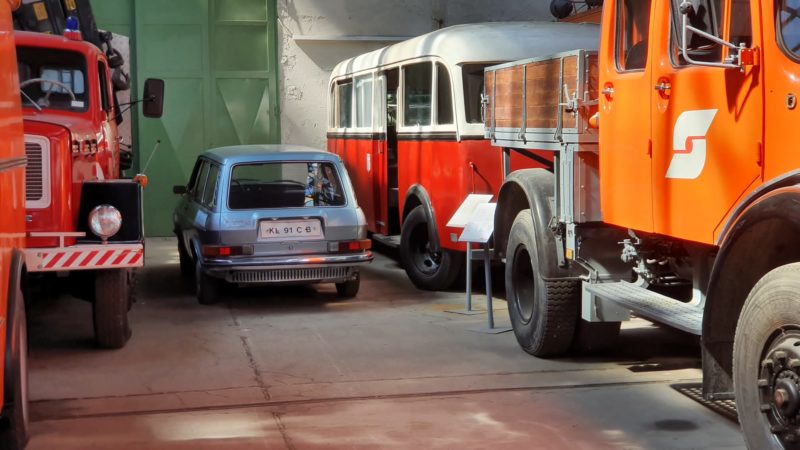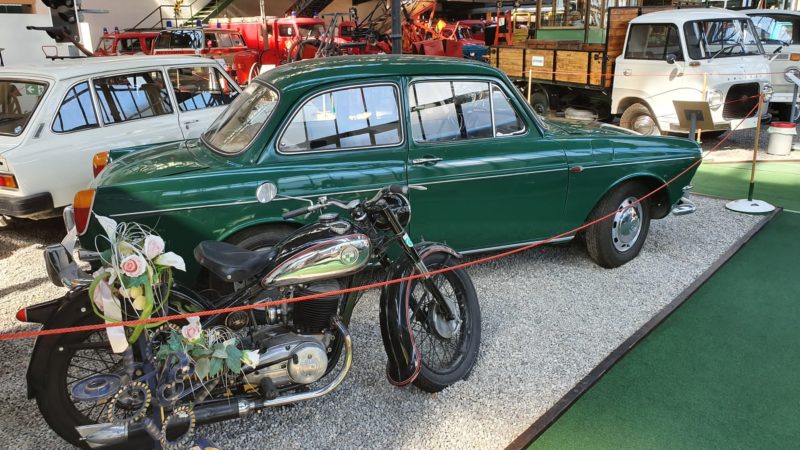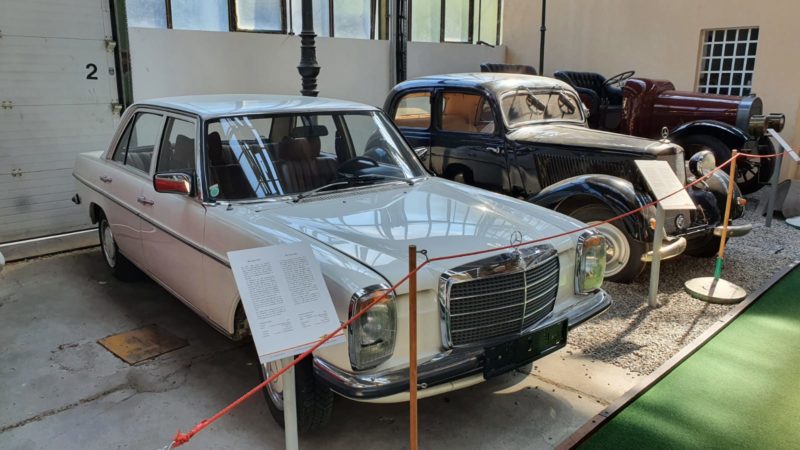Europe has many well-known car museums. Manufacturers like to exhibit their heritage, and the large, non-brand museums also attract many visitors every year. Every country has a number of museums where enthusiasts can indulge themselves and which are widely known as attractions. But there are still so many undisguised pocket-sized treasures. Like in Austria, which is home to numerous small and unpolished automobile history rooms.
For example, the uncle of the undersigned was in Austria a while ago to celebrate a pleasantly long holiday. He came across a museum in the Carinthian Ferlach that was pleasantly quiet because of the end of the holiday season. Austria, by the way, is bursting with smaller car museums, and one of them is the one my uncle went to take a look: Historama, Museum für Traffic und Technik. Of course he took some pictures, and the heritage he captured was mainly of German and Austrian cut. It is mainly the fifties, sixties and the first half of the seventies of the last century that you embrace. They take you into a time of edification and prosperity.
Lots of German work
Anyone who has a weakness for technology and all possible vehicles from those years should really visit the museum, I saw that immediately. History mainly houses a lot of German work. Various air-cooled Volkswagens go hand in hand with a few Mercedes-Benz copies, a nice four-door Auto Union 1000 S and a few Opels that exhale more than just history. Motorized two-wheelers, the Kleintransporter history and the larger transport vehicles (whether or not used for various government services are also discussed. And that is wonderful.
Typical Austrian recognition
Anyone who used to go on holiday to Austria as a child will recognize the PO Boxes. And those who were fascinated by large post-war trucks will immediately notice a beautiful Saurer, one of the showpieces of the collection. Also special: the ÖAF ENO 2 Elektropaketwagen, a model that served as a courier service car in several Austrian cities until 1982. Illustrious manufacturers such as Saurer and ÖAF were of Swiss and Austrian origin respectively, and fit geographical therefore very good in the museum.
Typ4, poor child
My eye quickly fell on the photo with a VW Typ 4 Variant that had been pushed away. Hidden somewhere between classic transport vehicles, he unwittingly told the story of the oft-maligned fourth air-cooled VW series. It was received with caution in 1968. To form an image and to name a few examples: that was also the year that Peugeot came out with the 504. NSU came out a year earlier with a very progressive (and considerably more expensive) Ro80, which shook the world. Ford and Opel had established their name with four- and six-cylinder mid-range cars. In the mid-sixties, Renault already gave substance to new practical uses with the R16. And competition from Japan (Mazda 1500, Toyota Corona RT4#) also formed a growing dot on the horizon during the second half of the XNUMXs, albeit cautiously.
Old guarantee of success
VW, however, held on to the old guarantee of success for its new top model, but that came to Wolfsburg on disappointing sales results of the Typ 4. These went hand in hand with the mediocre credentials from the first year of the Typ 4, which got much better in the following years, especially as the 412. We'll come back to that later. But not without mentioning that the carelessly parked Typ 4 Variant actually told the life story of this striking Volkswagen series. And which deserves much better than the historical commentary.
Museum pieces with their own story
Back to the collection, which reached me through a photo series. Every car had its story. And that also applied to every bus, every fire truck, every Kleintransporter, every two-wheeler, every public transport instrument. And that image was reinforced by the way of presentation. Just a piece of text there, but otherwise exhibited fairly from the loose wrist. I've been to museums before where I saw that too. Sometimes you can conserve something without preserving it. Let the exhibited tell its own story. The photos from Austria told their own story. And they did it so well that I now know for sure why I am going on a museum trip to the Alpine country with my uncle. And then I also want to go to the Historama in Ferlach. Because I can't get enough of that typical atmosphere of the past, which this unpolished Austrian show room exudes from every pore.
Thanks to Hans de Mooij

















I miss the Puch 650. Similar to the Fiat 500 but a nicer rear and Puch Motor.
Rare copy.
Beautiful story. Feel the unspeakable atmosphere.
DKW 1000S: well my dad had one just like that, in diamond blue. Then an F102, also four-door. Both a rarity. As a Citrophil I also enjoy German work. Because hey, it's about nostalgia. However?
The VW type 4 was indeed not here to stay. It was not the driving characteristics, it was a nice car, especially with an injection engine and automatic transmission. But the designers had already built in the rust by filling the cavities with foam. That turned out to be a disastrous idea: instead of keeping moisture out, the foam actually prevented the box girders and other cavities from becoming dry. Otherwise it was a rust monster of epic proportions, comparable only to the Alfasud in that period (which also contained foam, by the way).
You will never see them again and if you want to get started: the parts supply has also dried up with the disappearance of demand. Only the large boxer engines, there is still good to come. They have been used in the Transporters for a long time.
I see a DAF in the second photo?
I think a Volvo 66 combi
I see a DAF in the second photo behind the VW?
That must be a Volvo 66. Daf had no plastic bumpers.
Shame, I forgot all about the bus. The T1 was from before my time, but the T2 and certainly the T3 were used a lot at my employer. Made a lot of miles.
Feast on youth sentiment, including various vehicles driven by myself such as the Beetle 60s, of course, but also the VW412, the VW 1500, the VW K70, the Mercedes 200 (D) series, the Puch, the 2CV, the Volvo 66.
But the utility vehicles are just as enjoyable. Man oh man, how beautiful.
I can also recommend the Vötters car museum in Kaprun. Private collection of a hotel owner that got out of hand. With the Salzburgerlandkarte you can also enter for free.
Lovely that smell and ambiance of the 50s/60s.
Yes, I was there last year too, is also nicely decorated with lots of fashion dolls and jukeboxes and other style elements.
I happen to know that the Saurer group of textile machines and trucks is located in Switzerland, in Albon on the Rhine between Schaffhausen and Bodensee.
I also saw 2 x VW 412 variant in steel blue metallic, parked in 2 different places, must be the same car?
Thanks for the addition Jan.
Nice!
Maarre, ÖAF is Austrian but Saurer is really Swiss..
Thom
That's right. What I meant to say is that geographically this 'Alpine Heritage' fits well into the museum. I have adjusted the text. In any case, thanks for the response!
This is real cultural riding heritage. Hopefully there are also so-called driving days in this museum, because everything is saved to use it again for what it is intended for.
Beautiful photos invites you to visit the museum
Just what I see in the pictures makes my mouth water. So much beauty!! And also some that I myself have seen driving on Dutch roads. Let me assume that it will smell nice in that museum too.